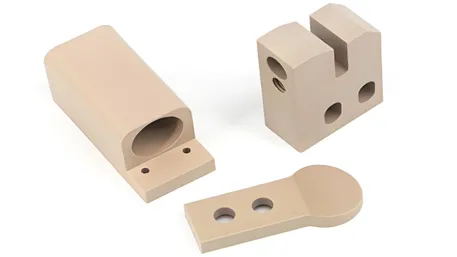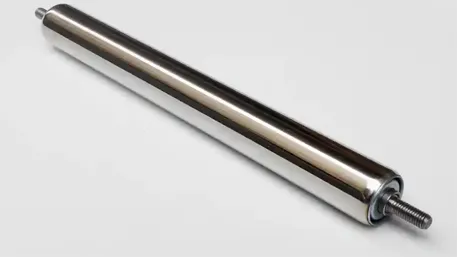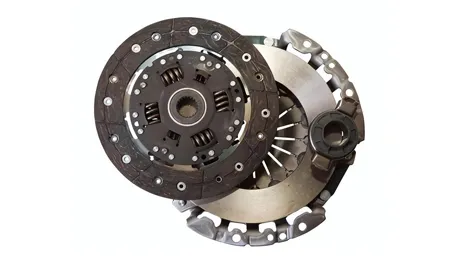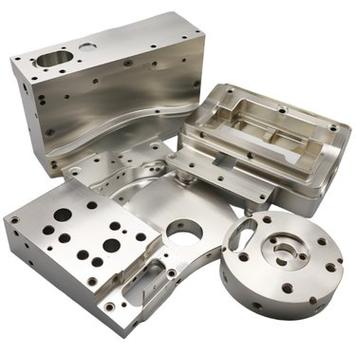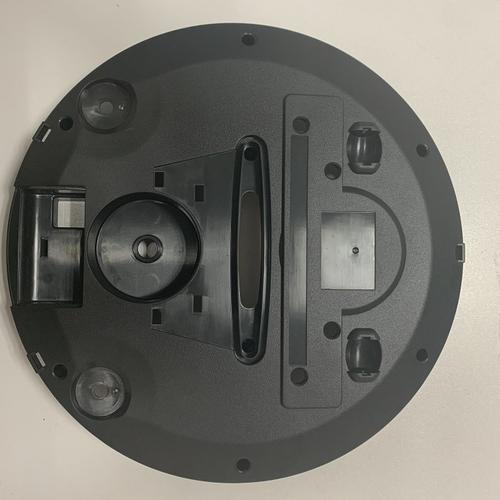
I. Core Material Properties and Application Advantages
(A) Comparison of Mainstream Material Properties
|
Material Type
|
Density (g/cm³)
|
Temperature Range (℃)
|
Core Advantages
|
Typical Certifications
|
|
Acrylonitrile Butadiene Styrene (ABS)
|
1.03 – 1.07
|
-20 ~ 80
|
High toughness, easy moldability, cost-effectiveness
|
UL94 V-0 Flame Retardant Certification
|
|
Polycarbonate (PC)
|
1.20 – 1.22
|
-40 ~ 130
|
Impact resistance, high transparency, dimensional stability
|
UL746C Material Certification
|
|
Polyoxymethylene (POM)
|
1.41 – 1.43
|
-40 ~ 100
|
High wear resistance, low friction coefficient
|
ISO 9227 Salt Spray Test Certification
|
|
PC/ABS Alloy
|
1.12 – 1.20
|
-30 ~ 120
|
Balanced high strength and toughness
|
RoHS Environmental Certification
|
|
Glass Fiber Reinforced Nylon (PA + GF)
|
1.25 – 1.35
|
-40 ~ 150
|
High rigidity, fatigue resistance
|
ASTM D638 Tensile Test Certification
|
(B) Driving Forces of Customization Requirements
1. Adaptability to Complex Working Conditions
- Wear Resistance: The main brush protective cover must withstand 500 hours of continuous friction testing with a wear amount ≤ 0.3mm.
- Impact Resistance: After dropping from a height of 1m onto a concrete floor, the shell structure remains intact and functions normally.
- Weather Resistance: No significant fading or deformation after 1000 hours of QUV-A irradiation.
2. Functional Integration Requirements
- Sensor Installation Precision: The precision of sensor installation parts is controlled within ±0.05mm to ensure accurate sensing.
- Battery Compartment Sealing: The sealing performance reaches IP54 standard, preventing dust and water from entering.
3. Lightweight Requirements
- The density of the body shell material ≤ 1.1g/cm³, reducing the overall weight while ensuring strength and improving battery life.
II. Analysis of Four Core Processing Technologies
(A) Injection Molding: High-Precision Structural Part Processing
- Technical Advantages:
-
- Supports one-step molding of complex internal structures (such as air ducts, clips) with a dimensional accuracy of ±0.03mm.
-
- Multi-cavity mold design (4 – 12 cavities per mold), suitable for 20 – 500g parts, with a production efficiency of 500 – 1500 pieces per hour.
- Process Parameters:
-
- Injection pressure: 100 – 160MPa, mold temperature: 50 – 80°C, cooling time: 12 – 20 seconds.
-
- Shrinkage control: 0.4% – 0.7% for ABS, 0.5% – 0.8% for PC, ensuring an assembly tolerance ≤ 0.02mm.
(B) Secondary Processing: Functional Enhancement Treatment
|
Process Type
|
Typical Application Scenarios
|
Technical Highlights
|
|
Ultrasonic Welding
|
Sealing of battery compartments and dust boxes
|
Welding strength ≥ 25MPa, excellent airtightness
|
|
Laser Engraving
|
Brand logos, operation buttons
|
Precision ±0.01mm, permanent marking
|
|
Thread Insertion
|
Connection parts of load-bearing components
|
Pull-out force of inserts ≥ 800N
|
- Technical Advantages:
-
- Ultrasonic welding achieves seamless sealing, preventing dust leakage and extending the equipment’s service life.
-
- Laser engraving enhances the product’s appearance texture and brand recognition.
(C) Surface Treatment Technologies
- Functional Coatings:
-
- Wear-resistant Coating: Teflon coating (thickness 15 – 25μm), reducing the friction coefficient by 40%, suitable for components such as rollers and side brushes.
-
- Antistatic Coating: Surface resistance ≤ 10⁹Ω, reducing dust adsorption and keeping the body clean.
- Decorative Treatments:
-
- Matte Treatment: Surface roughness Ra 0.8 – 1.6μm, with a significant anti-fingerprint effect.
-
- Gradient Spraying: Achieves natural color transitions on the body, enhancing product aesthetics.
(D) 3D Printing: Rapid Prototyping and Small-Batch Customization
- Process Advantages:
-
- Quickly verifies irregular structures (such as special-shaped side brush brackets, sensor protective shells), with samples delivered within 48 hours.
-
- Nylon carbon fiber material with a strength of up to 120MPa, suitable for prototyping high-strength components.
- Application Scenarios:
-
- Custom parts for high-end models (order quantity ≤ 200 pieces), reducing the delivery cycle by 50%.
-
- Reverse development of parts for obsolete models (3D scanning modeling error ≤ 0.08mm).
III. Full-Process Customization Solutions
(A) Design and Material Engineering
1. Multi-Dimensional Design Support
- Structural Optimization:
-
- Optimizes the air duct structure through ANSYS simulation, reducing air resistance by 20% and increasing suction power by 15%.
-
- Designs the tooth depth of the climbing wheels to be 1.2mm, increasing grip by 30% on slopes ≥ 15°.
- Functional Customization:
-
- The automatic dust collection port adopts a magnetic sealing design, with disassembly time ≤ 10 seconds and good sealing performance.
-
- Leaves a 0.3mm gap in the installation groove of the obstacle avoidance sensor to prevent thermal expansion and contraction from affecting sensing accuracy.
2. Precise Material Selection
- Main Brush Protective Cover: Selects POM material, which is highly wear-resistant and less prone to wear and deformation during long-term use.
- Body Shell: Adopts PC/ABS alloy, combining high strength and aesthetic appeal to meet impact resistance and appearance design requirements.
3. Pre-treatment Process
- Raw Material Drying: Controls the moisture content of PC material ≤ 0.02% to prevent bubbles and cracks after molding.
- Color Matching Scheme: Achieves a Pantone color matching accuracy of ΔE ≤ 0.8, supporting personalized color customization.
(B) Production and Quality Control
1. Flexible Manufacturing Capability
- Rapid Prototyping: 3D printed samples are delivered within 48 hours, with an aluminum mold development cycle of 10 – 15 days (30 – 40 days for steel molds).
- Mass Production:
-
- High-speed injection molding line: Equipped with ABB robots, with a daily production capacity of 8000 pieces per device (12-cavity mold).
-
- Automated production line: Integrated with a visual inspection system, with a dimensional detection accuracy of ±0.03mm and a defect recognition rate ≥ 99.6%.
2. Comprehensive Inspection System
- Physical Properties:
-
- Wear Test: After continuous rolling for 10km, the wear amount of the rollers ≤ 0.2mm.
-
- Impact Test: At -20°C, when a 500g steel ball impacts from a height of 1m, the shell remains intact.
- Environmental Performance:
-
- Temperature Resistance Test: After being placed in a 60°C high-temperature environment for 24 hours, the dimensional change rate of components ≤ 0.1%.
-
- Dust and Water Resistance Test: IP54 rating, preventing dust and water from entering the equipment.
- Certification Support: Provides CE, FCC, RoHS, and other certification reports to ensure global market access.
IV. Multi-Scenario Application Solutions
(A) Core Cleaning Components
- Side Brush Assembly: Injection-molded from wear-resistant POM material, with a brush angle designed at 30°, increasing the cleaning coverage by 25%. The tooth depth of 0.8mm prevents hair entanglement.
- Main Brush Protective Cover: Made of high-hardness PA + GF material, it can withstand a torque of 10N·m without deformation, ensuring the normal operation of the main brush.
(B) Intelligent Functional Components
- Sensor Housing: Injection-molded from PC material, with a light transmittance ≥ 90%, not affecting sensor signal transmission, and with a protection level of IP65.
- Charging Contact Protective Cover: Made of elastic TPU material, after 100,000 opening and closing tests, the elasticity retention rate ≥ 95%, ensuring charging safety.
(C) Appearance and Structural Components
- Body Shell: Combines PC/ABS alloy with IMD technology to achieve a high-gloss, wear-resistant surface with a significant anti-fingerprint effect.
- Dust Box: Made of transparent PC material, with clear capacity markings. The snap-fit design enables easy disassembly and good sealing performance.
(D) Customization for High-End Models
- Components for Quiet Sweeper Robots: Wraps the air ducts with special sound-absorbing materials, with an operating noise ≤ 50dB, enhancing the user experience.
- Components for All-in-One Sweeper Robots: Components integrated with automatic cleaning and drying functions are made of moisture and heat-resistant materials, ensuring long-term stable operation.
V. Technology Selection Guide
|
Requirement Type
|
Preferred Technology
|
Weight Range
|
Core Indicators
|
Delivery Cycle
|
|
R&D Validation and Small Batches
|
3D Printing + Injection Molding
|
20 – 300g
|
Rapid iteration, irregular structures
|
Prototype in 3 days, batch production in 15 days
|
|
Wear-Resistant and High-Strength Components
|
Injection Molding + PA + GF
|
50 – 500g
|
High wear resistance, fatigue resistance
|
Prototype in 7 days, batch production in 25 days
|
|
Large-Scale Standardized Production
|
Injection Molding + ABS
|
100 – 400g
|
Low cost, high production efficiency
|
Prototype in 5 days, batch production in 20 days
|



